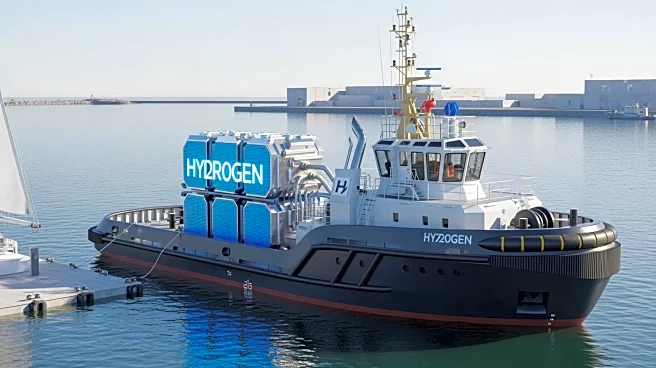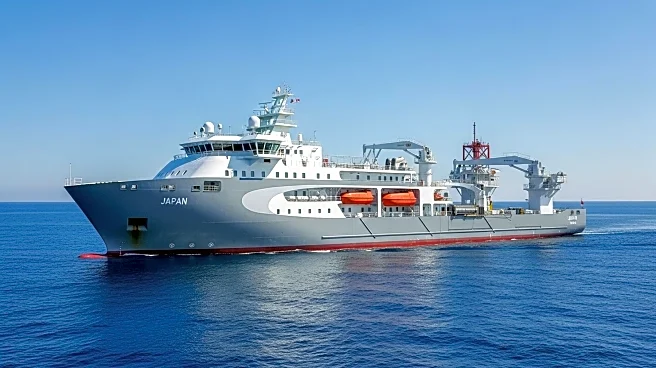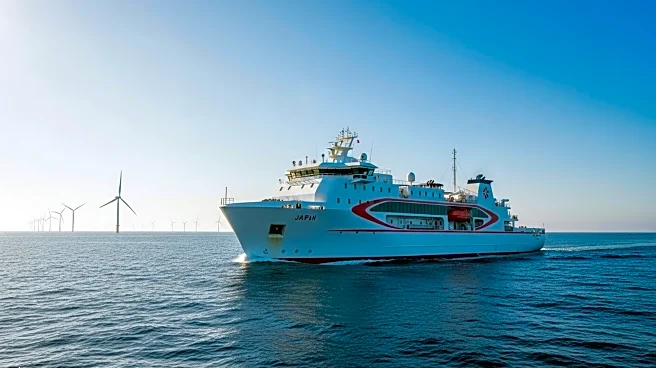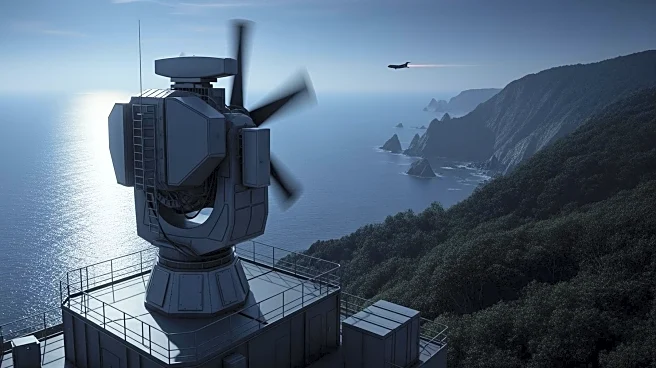What's Happening?
Tsuneishi Shipbuilding has delivered Japan's first tugboat equipped with a hydrogen-powered internal combustion engine, named Ten-Oh. The 38-meter vessel features a BeHydro high-output hydrogen dual-fuel engine and a high-pressure hydrogen gas storage
system. Developed under The Nippon Foundation's Zero Emission Ships Project, the tugboat aims to achieve zero CO2 emissions. It is powered by twin 12-cylinder hydrogen-blended engines and stores approximately 250kg of hydrogen in high-pressure tanks, ensuring operational performance equivalent to conventional fuel use while significantly reducing CO2 emissions.
Why It's Important?
The delivery of Ten-Oh marks a significant milestone in maritime innovation, showcasing the potential of hydrogen as a clean energy source for marine vessels. This development aligns with global efforts to reduce carbon emissions and transition to sustainable energy solutions. The tugboat's ability to operate on hydrogen or marine fuel ensures reliability and safety, setting a precedent for future vessel designs. The initiative supports Japan's commitment to environmental sustainability and positions the country as a leader in maritime technology.
What's Next?
The success of Ten-Oh may encourage further investment in hydrogen-powered vessels, potentially leading to broader adoption across the maritime industry. As technology advances, stakeholders may explore additional applications for hydrogen fuel, including larger commercial ships. Regulatory bodies and environmental organizations will likely monitor these developments, influencing future policy and industry standards.
Beyond the Headlines
The introduction of hydrogen-powered tugboats could drive innovation in other sectors, promoting the use of clean energy technologies. Ethical considerations regarding environmental impact and sustainability may influence corporate strategies and consumer expectations, encouraging a shift towards greener practices.














